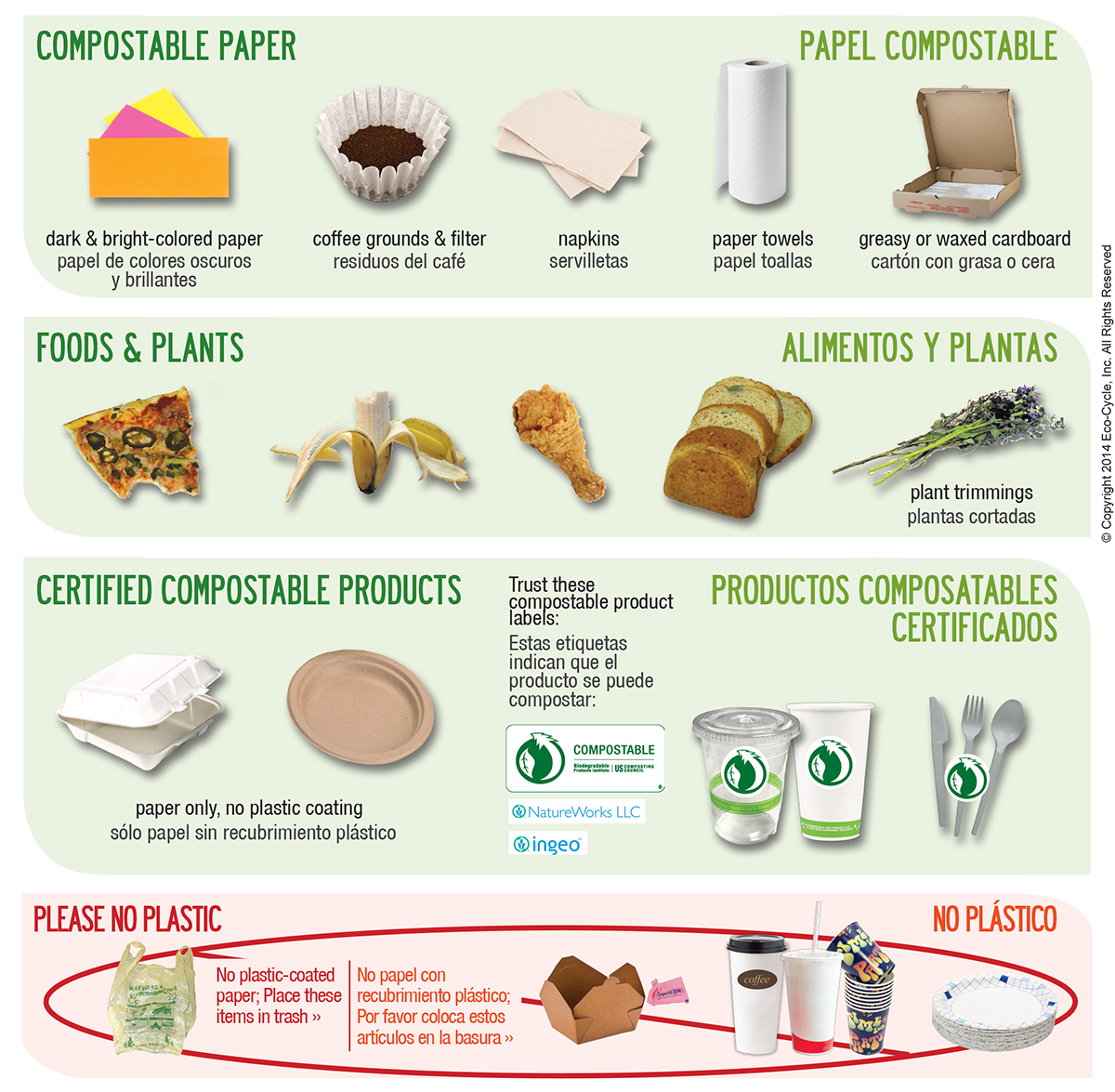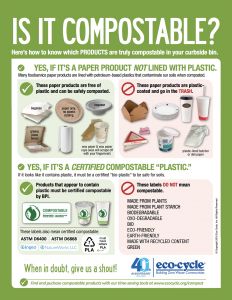ORGANICS RECYCLING
One of the largest components in our solid waste stream is compostable organics, also known as food and green waste. Compostable organics or compost is made when plant material such as vegetable peels, leaves, grass clippings, can be recovered. Separating food waste from your household trash, so it can be made into compost, or shipped to an anerobic digestor to be processed by a waste-to-energy facility is a simple yet important earth-friendly act to do.
Public Act 11-217, as amended by Section 4 of Public Act 13-285, provides a phased-in approach to commercial organics recycling. The law (CGS Sec. 22a-226e) says that if you are a commercial food wholesaler or distributor, industrial food manufacturer or processor, supermarket, resort or conference center, AND you generate a projected annual volume of 104 or more tons per year of source separated organic material, AND you are located within 20 miles of a permitted recycling facility that can accept that material, then you must ensure that those materials are recycled. In 2020, the projected annual volume triggering regulation decreases to 52 tons per year. Other compliance options under the law include on-site composting, or installation of permitted on-site organics treatment equipment.
Curbside Composting Tips
Use the right INDOOR container to collect your kitchen scraps.
We recommend a ceramic or steel container with a tight-fitting lid. You can also use a reusable plastic bucket like a large margarine or potato salad tub. Or try using a compostable box/container, such as a:
- Cereal box without the inside liner bag
- Compostable PLA from take-out food or boxed or boxed lettuce, etc.
- Bagasse (fiber) container from take-out food (make sure you are NOT using a container that is plastic-coated; avoid a shiny take-out box).
- Cardboard box, waxed ok
- Paper bag
Minimize flies and pests from your OUTDOOR curbside compost cart.
MIX IT: Layer your food scraps with your yard debris to absorb odors and moisture.
COOL IT: Keep your bin inside the garage or at least out of the sun.
CLOSE IT: Make sure the lid is clicked shut. Keep a cinder block or other weight on top to deter smaller animals. Or hook a bungee cord across the top of the lid.
RINSE IT: Give your bin a good rinse from time to time and let the water seep into your yard.
Reduce unwanted odors or flies around your INDOOR compost collection container:
EMPTY IT: Empty your indoor compost bin daily or every other day.
LINE IT: Place a small amount of shredded paper, newspaper or a paper towel on the bottom of the container to absorb moisture. Or line your bin with a paper bag or compostable plastic bag.
WRAP IT: Wrap meat or fish scraps in their original butcher paper or newspaper before placing them in the bin. Wrap vegetables scraps in used newspaper or paper towels.
CLEAN IT: Rinse off any visible mold or stuck-on food scraps after emptying. Clean your bin with dish soap once a week. Sprinkle in some baking soda to absorb odors.
CHILL IT: Refrigerate or freeze food scraps until your collection day, especially meat or fish scraps.
PROTECT IT: Fruit flies love fruit scraps and banana peels. Empty these from your bin daily. Rub vinegar on the rim of your bin to guard against fruit flies. Or create a simple trap to catch them–find instructions at www.ecocycle.org/compost
SKIP IT: For that really moldy, unknown container in your refrigerator, empty it directly into your outdoor bin or use your garbage disposal.
Not sure what is or isn’t compostable?
Download & print our quick guide.
Composting Guidelines


